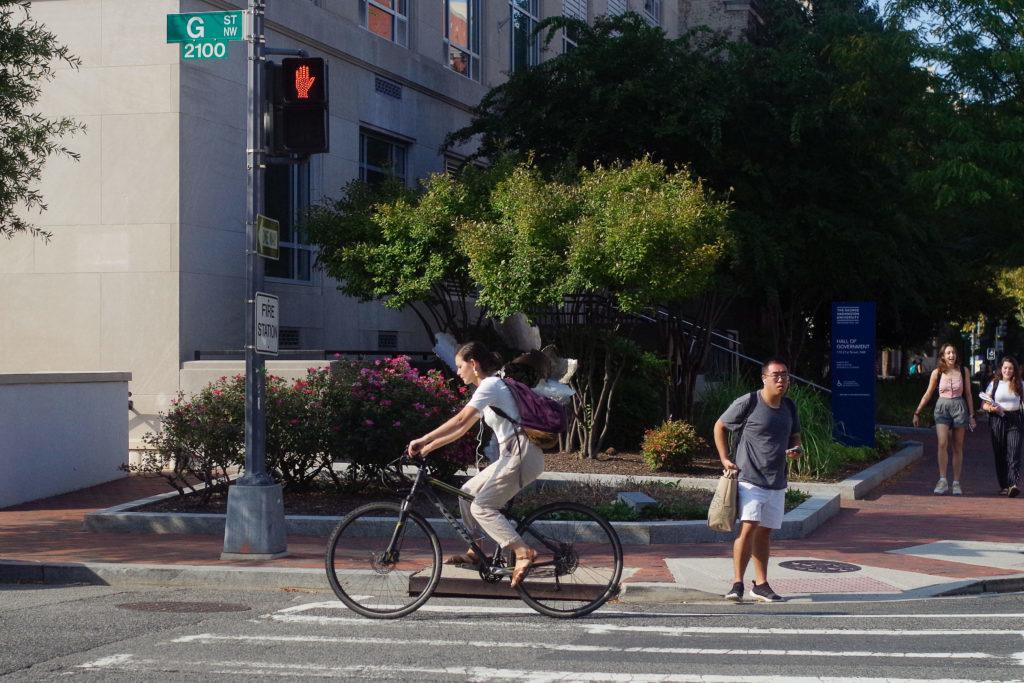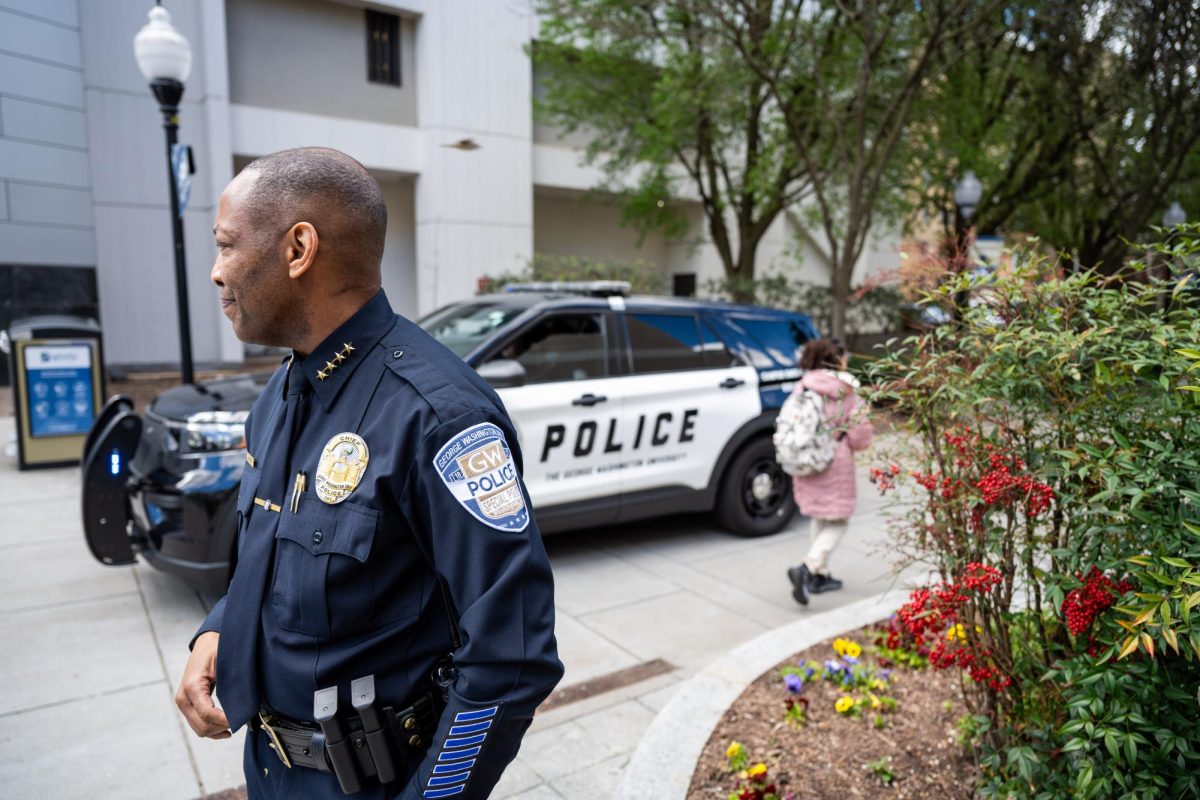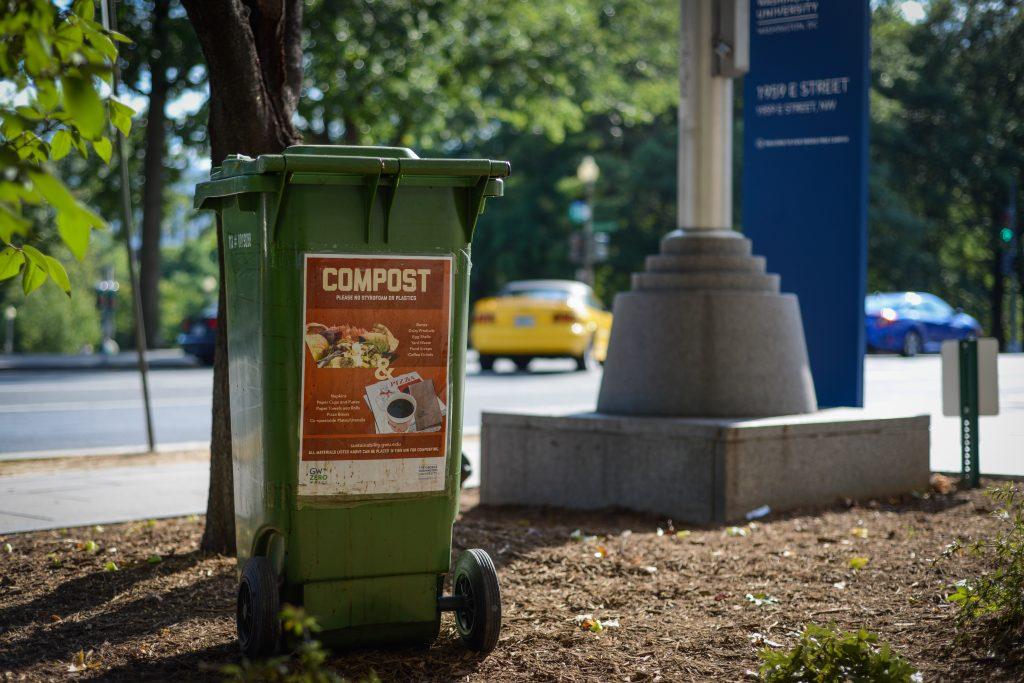The D.C. Department of Transportation announced plans earlier this month to start constructing a network of protected bike lanes on campus with new installations on 20th, 21st and G streets.
DDOT spokesperson Mariam Nabizad said officials will start installing the two-way protected bike lanes “in late fall” and will finish the project after summer 2021. The bike lanes, which will run through campus on 20th and 21st streets and connect on G Street in front of Lisner Hall, are the first of a three-phase project that will connect the National Mall to Dupont Circle.
Nabizad said the bike lanes will range between 12 to 15 feet wide and replace about 140 parking spaces, as officials install the lanes on the west side of 20th Street, the south side of G Street and the east side of 21st Street. During construction, workers will set up “hundreds of signs,” modifications to traffic signals and curb ramps, new striping, “protected bike lane devices” and “a floating bus island,” she said.
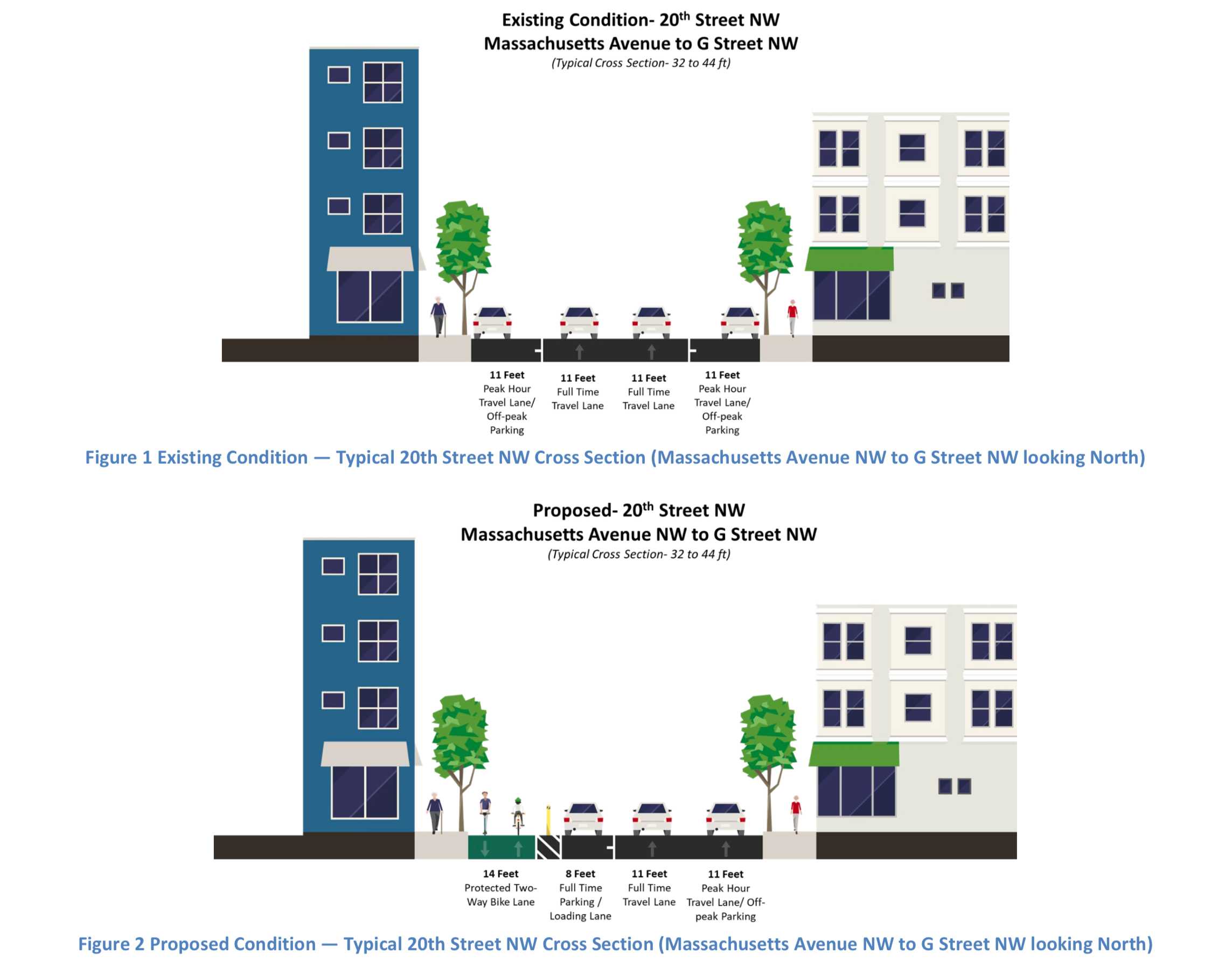
Courtesy of the D.C. Department of Transportation
In Phase One, design plans show officials will construct protected lanes between Massachusetts Avenue near Dupont Circle and the south end of campus at Virginia Avenue. In Phase Two, the bike lanes will continue down 21st Street before hitting Constitution Avenue at the National Mall in late 2021. Officials will extend the 20th Street bike lane past Dupont Circle and up to Connecticut Avenue in Phase Three.
Nabizad said officials have not yet set a timetable for Phase Three. She said DDOT officials first decided to install the lanes on 21st Street through a long-term plan called MoveDC, and officials later identified 20th Street as another route to include in the project following discussions with neighborhood stakeholders in Foggy Bottom.
The Foggy Bottom and West End Advisory Neighborhood Commission has negotiated the city’s bike lane proposals with DDOT for more than two years since District officials first announced plans in 2017. The ANC supported the city’s initial plans in 2018 and passed a resolution last January to request that DDOT installs the lanes on either 20th or 21st street.
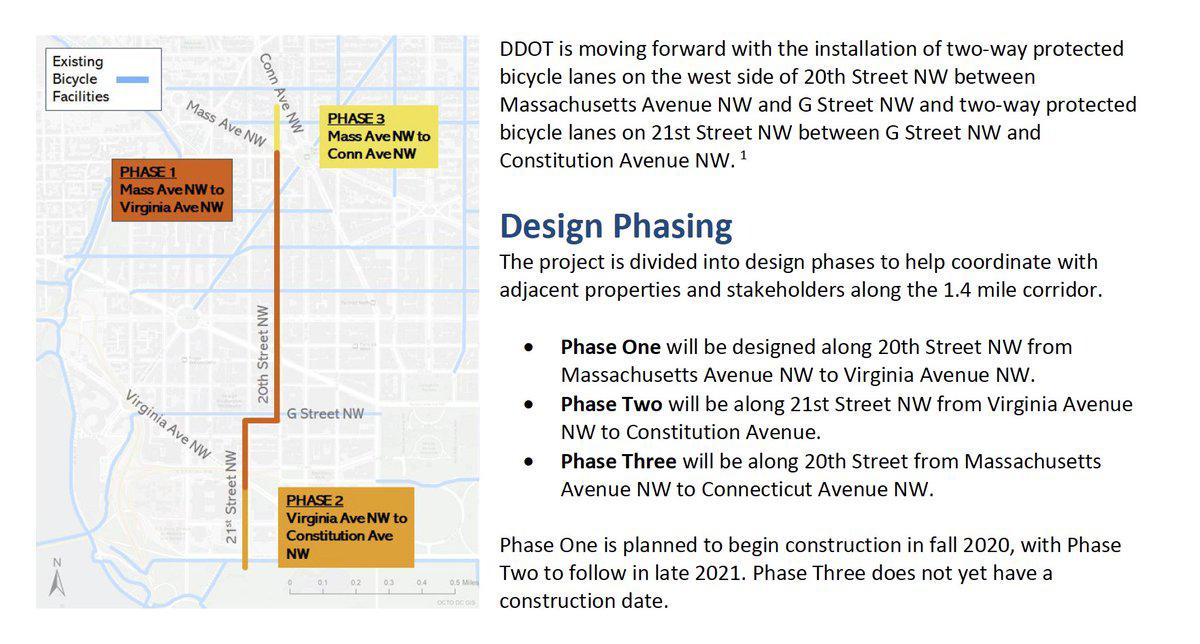
Courtesy of the D.C. Department of Transportation
“Stakeholders in the West End and Foggy Bottom neighborhoods were instrumental in shaping the final alignment of the 20th and 21st street NW protected bike lanes,” Nabizad said in an email.
DDOT officials launched a neighborhood planning study in 2018 to determine how to situate the new bike lanes between 20th, 21st and 22nd streets, and the agency held three public meetings with community members in 2018 and 2019 to gauge feedback, Nabizad said. She said agency officials gave “great weight” to recommendations ANC commissioners proposed throughout the project.
Nabizad said the final plan is a “hybrid” of ANC proposals.
“The 20th/21st/22nd Street Protected Bike Lane Project was developed with extensive public and interagency input, including several public meetings and robust stakeholder engagement,” she said.
James Harnett, a senior and the chair of the Foggy Bottom and West End ANC, said he was encouraged to see DDOT advance the ANC’s recommendations and announce plans to install bike lanes on 20th and 21st streets because it will provide a safer means of transportation for individuals commuting through the neighborhood.
“This is going to be able to deliver on the safety that folks from very young to very old are looking for to safely navigate Foggy Bottom and the West End and get to the places they need to be,” Harnett said.
Harnett said the protected lanes will limit the cyclist’s fear of getting struck by a driver on busy roads that run through campus – a concern that he said comes with commuting through local traffic.
“Many folks are frankly and rightfully scared of biking or scootering in the roadway, especially in rush hour when folks are speeding to get either into or out of the city along the roads that go through campus,” Harnett said.
Harnett says the three-phase approach allows officials to start installing improvements ahead of time instead of waiting a few years for all three phases to be ready simultaneously.
“We’re still moving forward on most of this network because we know that most of the network is ready to go, and we can come back to these very small pieces later, and frankly, that’s a much better outcome,” Harnett said.
Garret Hennigan, the community organizer for the Washington Area Bicyclists Association, said local bikers have expressed “enormous enthusiasm” toward the new bike lanes. WABA members have spent the last six years communicating with ANCs, engaging with residents across the ward and meeting together monthly to push for more bike lanes and off-street trails in D.C., Hennigan said.
“The best way to get people biking is by creating safe spaces for them to do that,” he said. “The average person is not going to look at 20th Street as it is today and think, ‘That’s a place I want to ride a bike.’”
He said WABA’s goal is to create 20 miles of protected bike lanes in D.C. by 2020, and DDOT’s plan would raise the total from 12 to 14, according to the city’s website.
“We have people in every ward really clamoring to be building more protected bike lanes, so while we haven’t quite hit the mileage that we were going for, there are so many more projects in the pipeline,” Hennigan said.
Ciara Regan contributed reporting.


